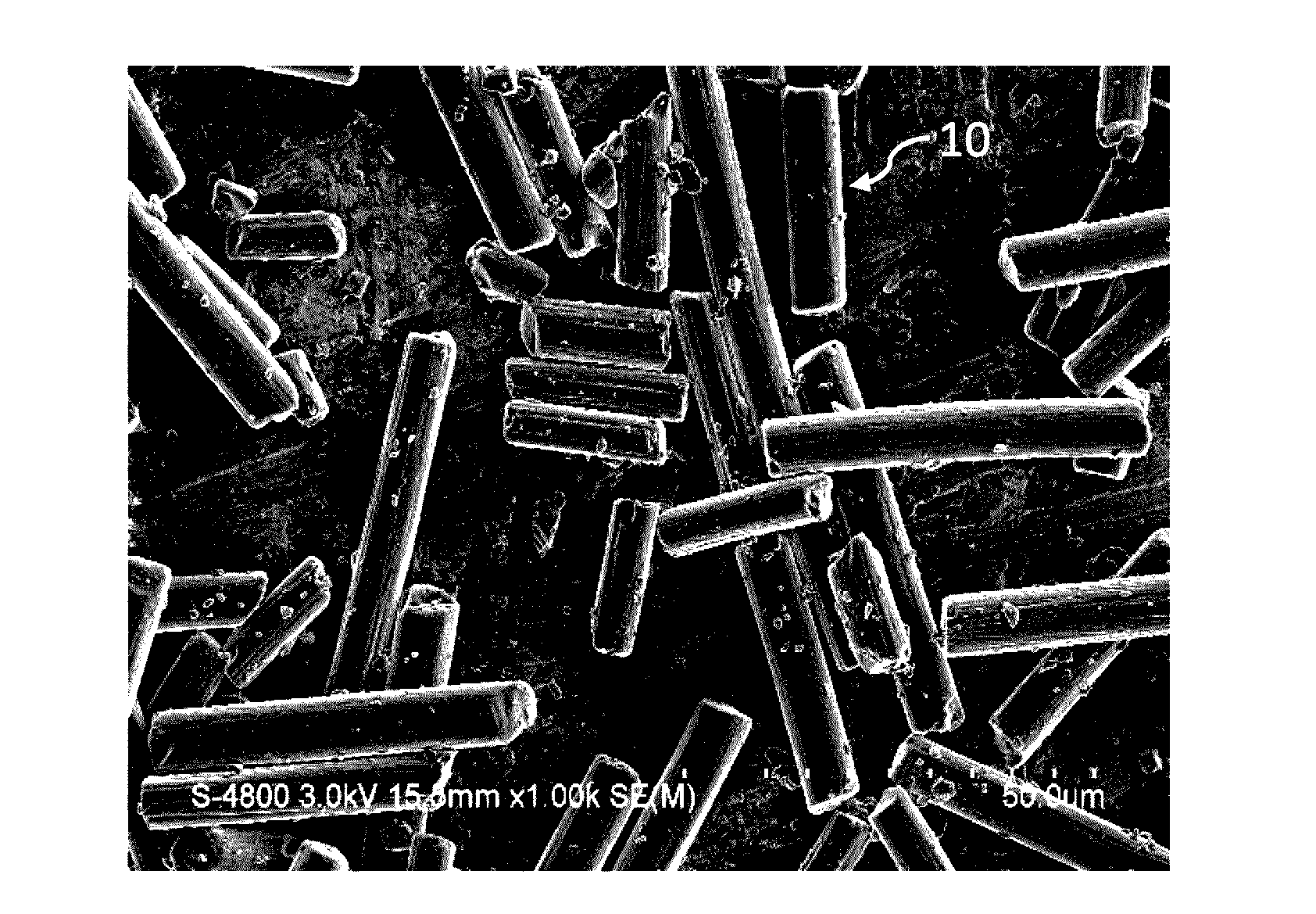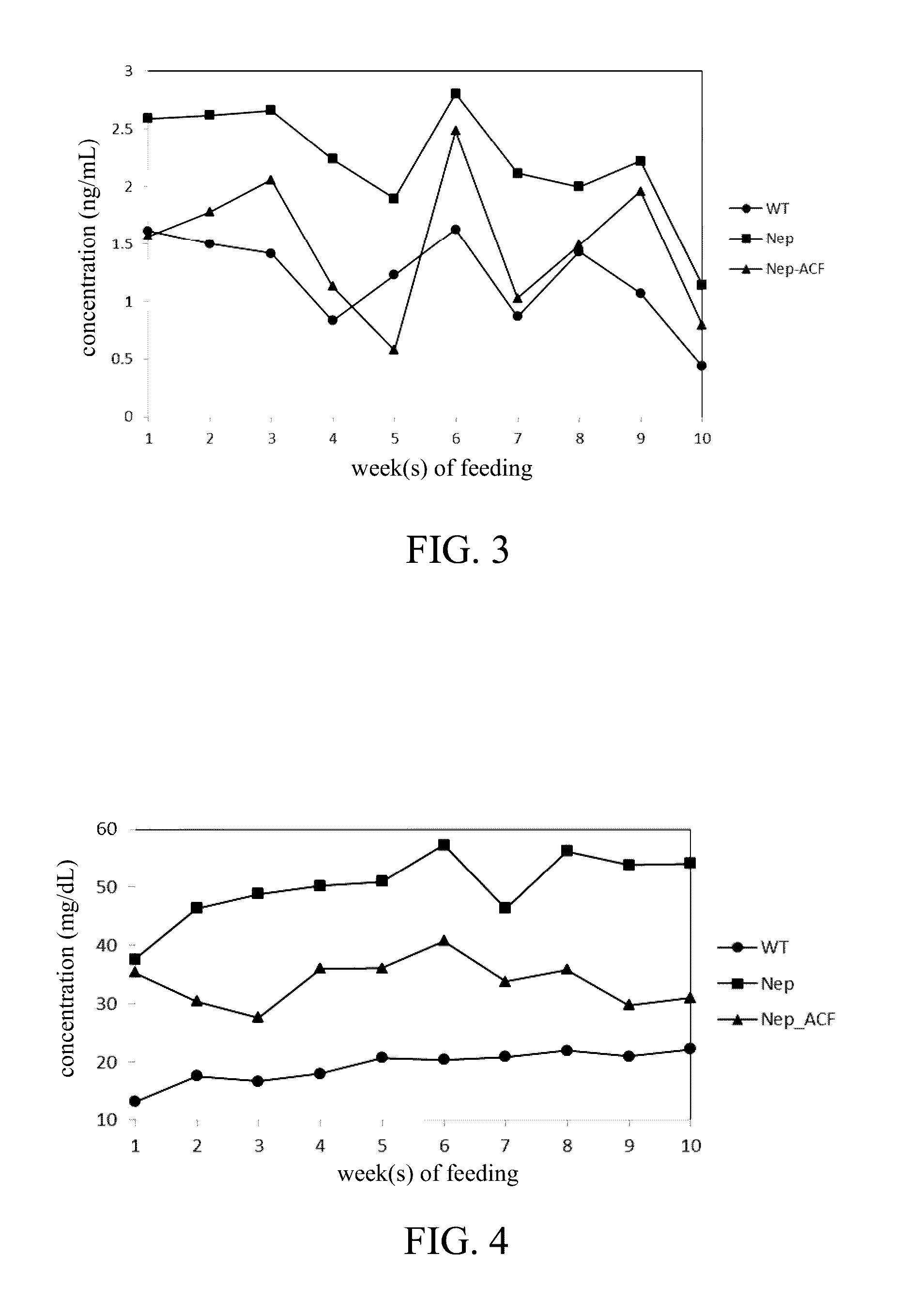Adsorbent for reducing uremic toxins in vivo
a technology of uremic toxins and adsorbents, which is applied in the field of uremic toxins in vivo, can solve the problems of poor adsorption capacity of adsorbents, kidney failure, and difficulty in kidney transplantation, so as to reduce the amount of uremic toxins, reduce the deterioration rate of renal function, and increase the adsorption capacity
- Summary
- Abstract
- Description
- Claims
- Application Information
AI Technical Summary
Benefits of technology
Problems solved by technology
Method used
Image
Examples
example 1
[0026]An adsorbent for reducing uremic toxins according to example 1 is a capsule in which polyacrylonitrile-based activated carbon fibers are encapsulated. The polyacrylonitrile-based activated carbon fibers were prepared by treating an oxidized polyacrylonitrile-based carbon fiber material with carbon dioxide gas containing water vapor at a temperature of 1000° C. for 5 minutes and grinding the carbon fiber material thus treated. In this example, the oxidized polyacrylonitrile-based carbon fiber material is formed by oxidizing a polyacrylonitrile-based carbon fiber cloth (Panex® 30, from Zoltek Companies, Inc.) which contains 90 wt % of polyacrylonitrile and 10 wt % of Rayon or petroleum pitch. The polyacrylonitrile-based activated carbon fibers thus prepared have an average diameter of 7.6 μm; a BET specific surface area of 964 m2 / g; a density of 2.13 g / m3; a percentage of micropores of 22%, a percentage of mesopores of 78%, and a percentage of macropores of 0%; an average length...
example 2
[0035]An adsorbent according to example 2 is a capsule in which polyacrylonitrile-based activated carbon fibers are encapsulated. The polyacrylonitrile-based activated carbon fibers were prepared by oxidizing the polyacrylonitrile-based carbon fiber cloth (Panex® 30, from Zoltek Companies, Inc.); treating the oxidized polyacrylonitrile-based carbon fiber cloth with the carbon dioxide gas containing water vapor at a temperature of 900° C. for 20 minutes; and grinding the carbon fiber thus treated. The polyacrylonitrile-based activated carbon fibers have an average diameter of 9.3 μm; a BET specific surface area of 398 m2 / g; a density of 1.749 g / m3; a percentage of micropores of 18%, a percentage of mesopores of 82%, and a percentage of macropores of 0%; an average length of 27.1±2.4 μm; a total acidic group of 1.559 meq / g; and a total basic group of 0.9 meq / g. The test result of the adsorption in vitro is shown in FIG. 2, in which the adsorbent of example 2 has an adsorption percenta...
example 3
[0036]An adsorbent according to example 3 is a capsule in which polyacrylonitrile-based activated carbon fibers are encapsulated. The polyacrylonitrile-based activated carbon fibers were prepared by oxidizing the polyacrylonitrile-based carbon fiber cloth (Panex® 30, from Zoltek Companies, Inc.); treating the oxidized polyacrylonitrile-based carbon fiber cloth with the carbon dioxide gas containing water vapor at a temperature of 900° C. for 40 minutes; and grinding the carbon fiber thus treated. The polyacrylonitrile-based activated carbon fibers have an average diameter of 8.6 μm; a BET specific surface area of 921 m2 / g; a density of 2.043 g / m3; a percentage of micropores of 21%, a percentage of mesopores of 79%, and a percentage of macropores of 0%; an average length of 21.9±1.4 μm; a total acidic group of 1.384 meq / g; and a total basic group of 1.26 meq / g. The test result of the adsorption in vitro is shown in FIG. 2, in which the adsorbent of example 3 has an adsorption percent...
PUM
| Property | Measurement | Unit |
|---|---|---|
| Temperature | aaaaa | aaaaa |
| Temperature | aaaaa | aaaaa |
| Length | aaaaa | aaaaa |
Abstract
Description
Claims
Application Information
 Login to View More
Login to View More - R&D
- Intellectual Property
- Life Sciences
- Materials
- Tech Scout
- Unparalleled Data Quality
- Higher Quality Content
- 60% Fewer Hallucinations
Browse by: Latest US Patents, China's latest patents, Technical Efficacy Thesaurus, Application Domain, Technology Topic, Popular Technical Reports.
© 2025 PatSnap. All rights reserved.Legal|Privacy policy|Modern Slavery Act Transparency Statement|Sitemap|About US| Contact US: help@patsnap.com



